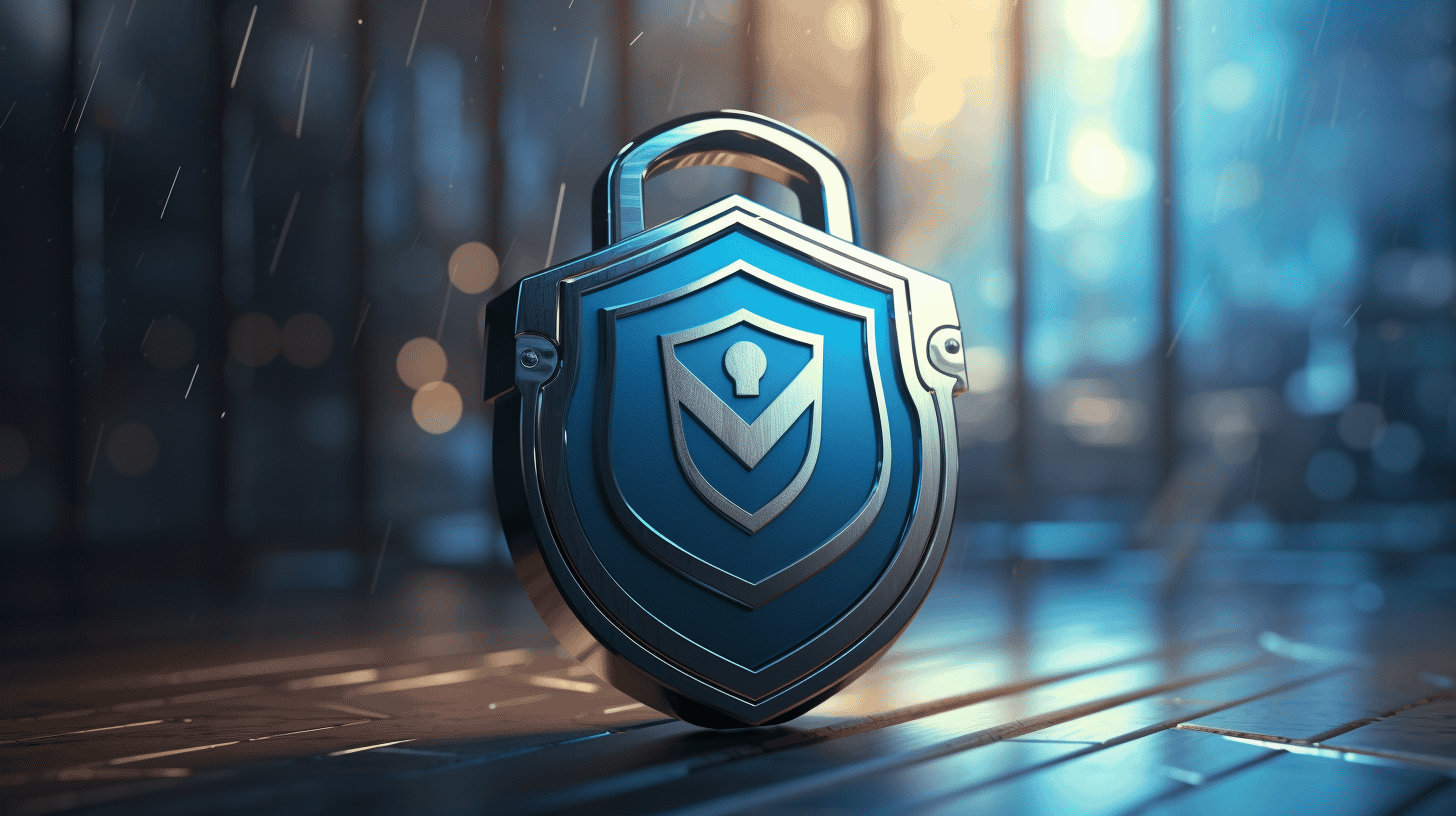作為線上商店所有者,維護您的 WordPress 網站對於您的業務成功至關重要。定期維護可確保您的網站順利運作、免受潛在威脅並實現效能最佳化。然而,瀏覽 WordPress 維護的世界可能會很困難,特別是對於該平台的新手來說。
但不要害怕!本綜合指南旨在幫助您了解定期維護的重要性、所涉及的任務、安全注意事項、效能優化以及與 SEO 的相關性。我們還將深入研究電子商務網站的具體維護需求,並專注於 WooCommerce。此外,我們還將提供見解,協助您為網路商店選擇合適的維修服務、外掛程式和主機服務供應商。
在本指南結束時,您將擁有知識和工具,可以自信地管理和維護您的 WordPress 網站,確保其順利運行並幫助您的線上業務蓬勃發展。那麼,讓我們一起深入探索 WordPress 維護的世界吧! 🚀
定期 WordPress 維護的重要性
介紹:
定期的 WordPress 維護對於您網站的平穩運行和安全至關重要。它涉及保持最新功能和安全升級,這有助於確保您的網站安全並實現最佳運行。在本文中,我們將討論定期進行 WordPress 維護的重要性以及它如何從長遠來看使您的網站受益。
定期 WordPress 維護的好處:
- 增強安全性: 定期進行 WordPress 維護的主要原因之一是確保您的網站的安全。 WordPress 是一個流行的平台,由於其使用廣泛,駭客經常將其作為目標。透過保持 WordPress 核心、主題和外掛程式更新,您可以大幅降低可能被駭客利用的漏洞風險。
- 改進的性能: 定期維護可使您的網站順利運作並保持最佳效能。過時的外掛程式或主題會降低您的網站速度,導致糟糕的用戶體驗並可能趕走訪客。透過確保所有外掛程式和主題都更新到最新版本,您可以提高網站的速度和整體效能。
- 錯誤修復和相容性: WordPress、主題和外掛程式的更新通常包括錯誤修復和相容性改進。這些更新解決了所有已知問題,並確保您的網站能夠與最新版本的 WordPress 和外掛程式更新無縫運行。透過定期維護您的 WordPress 網站,您可以避免相容性問題並確保流暢的使用者體驗。
- 隨時了解最新功能: WordPress 定期發布新功能和改進,以增強使用者體驗和您網站的功能。定期維護可確保您充分利用這些新功能,從而為您的網站訪客提供更好的體驗。
- 搜尋引擎優化(SEO): 定期維護對您網站的 SEO 工作起著重要作用。像 Google 這樣的搜尋引擎非常重視定期更新和維護的網站。透過讓您的 WordPress 網站保持更新,您可以向搜尋引擎證明您的網站是活躍的、值得信賴的和相關的,這可以對您的搜尋引擎排名產生積極的影響。
來源: 有效的 WordPress 維護
結論:
定期進行 WordPress 維護對於確保您的網站安全、優化其效能以及受益於最新功能至關重要。透過隨時了解 WordPress 核心更新、外掛和主題,您可以確保功能的順暢並增強網站的安全性。不要忽視定期維護—投入時間和精力來保持您的 WordPress 網站處於最佳狀態。
典型的 WordPress 維護任務
保持 WordPress 網站良好維護對於實現最佳效能和安全性至關重要。定期維護可確保您的網站順利運作並免受潛在漏洞的侵害。在本節中,我們將探討 WordPress 網站所有者應定期執行的一些典型維護任務。
核心、主題和外掛程式更新
定期更新您的 WordPress 核心、主題和外掛程式對於保持您的網站處於最佳狀態至關重要。這些更新通常包括錯誤修復、安全性修補程式和可以增強您網站效能的新功能。
🔧 更新 WordPress 核心:WordPress 定期發布更新以解決安全性問題並改善功能。透過保持最新版本,您可以確保您的網站受到保護並使用最新功能進行最佳化。
🎨 更新主題:主題控制您的 WordPress 網站的整體外觀和佈局。主題開發人員經常發布更新來修復錯誤、提高相容性並引入新的設計元素。保持主題最新可確保為訪客提供令人愉悅且引人入勝的使用者體驗。
🔌 插件更新:外掛程式為您的 WordPress 網站新增功能,例如聯絡表單、SEO 優化和社群媒體分享。外掛開發人員定期發布更新以修復錯誤、添加新功能並增強與最新版本的 WordPress 的兼容性。請記得定期更新您的插件,以利用改進的功能和安全性增強功能。
清理不必要的數據
隨著時間的推移,WordPress 會累積不必要的數據,這些數據會拖慢您的網站速度、降低其速度並影響其效能。清理這些資料是一項重要的維護任務,可以幫助優化您的網站並提高其速度。
⚙️ 資料庫最佳化:WordPress 使用資料庫來儲存您網站的所有內容和設定。優化該資料庫涉及刪除不必要的數據,例如帖子修訂、垃圾評論和丟棄的項目。透過定期優化資料庫,您可以減少其大小並提高網站的整體效能。
🗑️ 刪除不需要的檔案和影像:當您更新和修改您的網站時,您可能會累積佔用伺服器空間的未使用的檔案和映像。定期刪除這些未使用的檔案可以釋放儲存空間並有助於加快網站載入速度。
定期備份
無論您的 WordPress 網站維護得多麼好,都可能會發生駭客攻擊或伺服器故障等不可預見的事件。定期備份網站資料對於保護您的內容和在緊急情況下恢復您的網站至關重要。
💾 規劃備份:設定自動備份系統,定期備份您的網站的檔案和資料庫。這確保即使發生災難,您也可以快速將網站恢復到以前的狀態。
透過定期執行這些典型的 WordPress 維護任務,您可以確保您的網站保持安全、最佳效能並提供出色的使用者體驗。使用提高生產力的自動化工具簡化您的 WordPress 維護,這些工具可以簡化和自動化許多這些基本任務。 簡化 WordPress 維護 今天就更好地照顧您的網站!
WordPress 維護中的安全注意事項
在當今世界,網路威脅日益複雜,確保 WordPress 網站的安全比以往任何時候都更加重要。忽視安全措施可能會導致您的網站容易受到駭客攻擊、資料外洩和惡意軟體感染。當涉及 WordPress 維護時,保護您的網站應該是首要任務。讓我們探討一些基本的安全注意事項:
密碼保護
保護您的 WordPress 網站的第一道防線之一就是設定強密碼。弱密碼會使駭客更容易未經授權存取您的網站。以下是一些密碼保護的最佳做法:
- 使用大寫和小寫字母、數字和特殊字元的組合。
- 為 WordPress 網站上的每個使用者帳戶建立唯一的密碼。
- 避免在密碼中使用個人識別資訊或常用詞。
- 定期更新您的密碼。
請記住,強密碼是保護您的網站免受潛在攻擊的第一步。
SSL 憑證的使用
使用 SSL(安全通訊端層)憑證對於保護您的網站與其使用者之間傳輸的資料至關重要。 SSL 憑證對資料進行加密並提供安全連接,防止竊聽和資料竊取。 SSL 憑證至關重要的原因如下:
- 它們確保使用者資訊(例如登入憑證和個人詳細資料)的隱私和完整性。
- SSL 憑證可以激發您網站訪客和客戶的信任。
- 搜尋引擎在排名中優先考慮安全的網站,這可以改善您的 SEO 效果。
確保為您的 WordPress 網站取得並安裝 SSL 憑證以建立安全連線。
正常運作時間監控
確保您的網站始終可供訪客存取至關重要。停機不僅會影響使用者體驗,還會使您的網站容易受到惡意攻擊。實施正常運作時間監控可以幫助您了解可能導致網站離線的任何潛在問題。正常運作時間監控如此重要的原因如下:
- 它可以幫助您快速識別並解決停機問題。
- 持續監控可協助您及時發現並解決任何與效能相關的問題。
- 正常運作時間監控服務提供即時警報,讓您隨時了解網站的可用性。
投資可靠的正常運作時間監控工具或服務可以幫助您維護安全可靠的 WordPress 網站。
安全掃描
定期安全掃描對於保護您的 WordPress 網站免受漏洞和惡意軟體的侵害起著至關重要的作用。這些掃描會分析您網站的文件和資料庫,搜尋潛在的安全風險。安全掃描的主要優點包括:
- 偵測並刪除惡意軟體或惡意程式碼。
- 識別可能存在安全漏洞的過時的外掛程式、主題或 WordPress 核心檔案。
- 防止暴力攻擊和駭客攻擊。
考慮使用安全插件或外部安全服務進行徹底掃描並識別需要解決的任何安全漏洞。
請記住,在 WordPress 維護方面,安全性應該是首要任務。透過實施強密碼、使用 SSL 憑證、執行定期安全掃描和監控網站正常運行時間,您可以顯著降低安全漏洞的風險並確保您的 WordPress 網站安全無虞。
要了解有關最大限度提高網站安全性的更多信息,請查看我們的文章 最大程度提高網站安全性.
WordPress 網站的效能優化
您的 WordPress 網站的運行速度是否比您希望的要慢?您想為您的用戶提供快速、無縫的瀏覽體驗嗎?如果是這樣,那麼是時候考慮對您的 WordPress 網站進行一些效能優化了。透過實施一些關鍵策略,您可以顯著提高網站的載入時間和整體效能。在本文中,我們將探討三種基本的優化:圖像優化、最小化 CSS 和 JavaScript 檔案以及資料庫優化。讓我們開始吧!
🌄 影像優化
圖像是任何網站不可或缺的一部分,但如果沒有進行適當的最佳化,也會導致載入時間變慢。以下是優化圖像和提高網站效能的一些技巧:
- 壓縮:使用圖像壓縮工具或插件來減小圖像的檔案大小而不影響其品質。這可以顯著減少載入時間。
- 適當的尺寸:將圖像調整為網站上顯示的合適尺寸。使用過大的圖片可能會不必要地減慢您的網站速度。
- 延遲載入:實現延遲加載,這是一種推遲螢幕外圖像加載直到用戶向下滾動頁面的技術。這可以大大改善初始載入時間。
🔗 有關圖像優化的更多詳細信息,請參閱我們的指南 如何優化 WordPress 網站的圖片.
📦 壓縮 CSS 和 JavaScript 文件
CSS 和 JavaScript 檔案對於網站功能至關重要,但它們也可能龐大且緩慢,從而影響網站效能。縮小這些檔案可以顯著縮短載入時間。您可以按照以下方式操作:
- 刪除空格和註釋:從 CSS 和 JavaScript 檔案中消除不必要的空格和註解。這會減小它們的檔案大小,使它們的載入速度更快。
- 合併和縮小:將多個 CSS 和 JavaScript 檔案合併為一個檔案並將其最小化。這減少了 HTTP 請求的數量並減小了整體檔案大小。
🔗 要了解有關壓縮 CSS 和 JavaScript 文件的更多信息,請訪問我們的綜合指南 為您的 WordPress 網站優化 CSS 和 JavaScript.
🗄️ 資料庫優化
優化您的 WordPress 資料庫可能會對您網站的效能產生重大影響。透過刪除不必要的資料並優化資料庫結構,您可以改善載入時間並減少資料庫查詢。請依照以下步驟進行資料庫優化:
- 定期清理:刪除未使用的主題、外掛程式、草稿和垃圾評論。這些會隨著時間的推移而累積並佔用資料庫中寶貴的空間。
- 優化資料庫表:使用插件或手動優化資料庫表以最小化其大小並提高效率。
🔗 有關資料庫優化的詳細指南,請參閱我們的文章 如何優化你的 WordPress 資料庫.
透過實施這些效能優化,您可以建立更快、更用戶友好的 WordPress 網站。請記住,優化圖片、縮小 CSS 和 JavaScript 檔案以及實施資料庫優化都是最佳網站效能的必要步驟。立即開始實施這些策略並觀察您的網站像閃電一樣加載!
WordPress 維護中的相關性和 SEO 注意事項
在當今的數位環境中,擁有一個維護良好的網站對於企業和個人來說都至關重要。就網站維護而言,WordPress 是最受歡迎的內容管理系統之一。但除了確保您的網站順利啟動和運行之外,還有其他重要考慮因素需要牢記——相關性和 SEO。
內容審核與清理
從 SEO 角度維護 WordPress 網站時,定期檢查和清理內容非常重要。以下是為什麼這一點至關重要的幾個原因:
- 過時的內容: 隨著時間的推移,您的網站內容可能會過時,導致其與搜尋引擎的相關性下降。透過定期審查和更新您的內容,您可以確保它對用戶和搜尋引擎來說都是新鮮且資訊豐富的。
- 關鍵字優化: 隨著搜尋演算法的發展,使用相關關鍵字優化您的內容至關重要。定期的內容審查可以讓您發現關鍵字納入的機會或更新現有關鍵字以符合當前的搜尋趨勢。
- 斷開的連結和重定向: 斷開的連結和重定向可能會對您網站的用戶體驗和 SEO 產生負面影響。透過定期審查,您可以識別並修復任何損壞的連結或過時的重定向,確保為訪客提供無縫的瀏覽體驗。
- 提高網站速度: 網站速度是搜尋引擎的一個重要的排名因素。在內容審核期間,請考慮優化圖像、壓縮檔案並消除不必要的插件以縮短網站的載入時間。
SEO最佳實踐維護
保持良好的 SEO 實踐不是一次性的任務;它需要持續的努力和關注。以下是 WordPress 維護的一些關鍵 SEO 注意事項:
- 優化標題標籤和元描述: 標題標籤和元描述在決定您的網站如何出現在搜尋引擎結果中起著至關重要的作用。確保 WordPress 網站上的每個頁面都有獨特且優化的標題標籤和元描述,以準確描述內容。
- 部落格文章之間的相互連結: 相關部落格文章之間的相互連結可以提高您網站的整體可見性,並幫助搜尋引擎更有效地發現和索引您的內容。定期查看您的部落格文章並尋找機會添加內部鏈接,引導用戶和搜尋引擎瀏覽您的網站。
- XML 網站地圖更新: 您的 XML 網站地圖可作為搜尋引擎的路線圖,幫助他們了解您網站的結構和層次結構。定期更新您的 XML 網站地圖,以包含新頁面、部落格文章以及網站結構的任何變更。
- 行動友善設計: 由於大多數網路使用者都在行動裝置上瀏覽,因此擁有一個行動友善的網站對於使用者體驗和 SEO 都至關重要。確保您的 WordPress 網站針對行動裝置進行了最佳化,並且在不同螢幕尺寸上表現良好。
請記住,保持良好的 SEO 實踐(例如部落格文章之間的互連和使用適當的標題標籤結構)可提高網站可見度、增強用戶體驗,並最終有助於網站的整體成功。積極主動地審查和改進您的 WordPress 網站的相關性和 SEO,您將獲得增加自然流量和提高搜尋引擎排名方面的好處。
電子商務維護:WooCommerce 重點
🔧 定期 WooCommerce 更新
在不斷發展的電子商務世界中,保持您的網上商店最新狀態至關重要。 WooCommerce 是 WordPress 上最受歡迎的線上商店平台之一,需要定期更新以確保最佳效能和安全性。
為了讓您的 WooCommerce 商店保持最佳狀態,必須隨時了解更新。這些更新不僅包括核心 WooCommerce 軟體,還包括其主題和外掛程式等元件。透過定期更新您的 WooCommerce 安裝,您可以利用錯誤修復、功能增強以及最重要的安全性修補程式。
更新 WooCommerce 是一個簡單的過程,可以直接從您的 WordPress 儀表板完成。只需導航到“插件”部分,找到 WooCommerce,然後點擊“立即更新”按鈕。在進行任何更新之前備份您的網站總是一個好主意,以防出現問題。
💡 專業提示: 啟用 WooCommerce 的自動更新可以節省您的時間並確保您的商店始終運行最新版本。為此,請前往 WooCommerce 設定並選取「啟用自動更新」複選框。
🔒 電子商務安全掃描
經營網上商店時,安全始終是首要任務。隨著網路威脅和資料外洩的增加,定期掃描您的 WooCommerce 網站以尋找漏洞和潛在風險至關重要。
有幾種可用的安全插件可以幫助您完成此任務。這些外掛程式會掃描您的網站以查找惡意軟體、漏洞和可疑活動,讓您安心地知道您的線上商店受到保護。
WooCommerce 安全插件中需要尋找的一些關鍵功能包括:
- 惡意軟體掃描與移除
- Web 應用程式防火牆 (WAF) 可封鎖惡意流量
- 即時威脅情報以識別和預防攻擊
- 雙重身分驗證,增加安全保障
🛒 測試結帳流程
結帳流程是任何電子商務商店的關鍵部分。這是客戶完成購買的最後一步,任何問題或摩擦點都可能導致顧客放棄購物車並損失銷售。
為了確保您的客戶享受順暢、輕鬆的結帳體驗,定期測試您的結帳流程至關重要。其中包括:
- 將產品加入購物車
- 輸入客戶資訊
- 選擇送貨和付款方式
- 下訂單
透過定期測試這些流程,您可以識別並修復可能出現的任何問題,例如斷開的連結、支付網關錯誤或運費計算問題。這將幫助您為客戶提供無縫的購物體驗並提高轉換率。
⚡ 運行速度測試
網站速度是電子商務成功的關鍵因素。頁面載入緩慢會導致訪客感到沮喪、跳出率上升以及銷售額損失。因此,定期測試您的 WooCommerce 商店的速度並對其進行最佳化以獲得最佳效能至關重要。
有許多工具可以幫助您衡量網站的速度並找出需要改進的地方,例如:
- 谷歌頁面速度洞察
- GTmetrix
- Pingdom 工具
透過分析這些速度測試的結果,您可以進行必要的最佳化,例如壓縮圖像、縮小腳本和樣式表以及利用瀏覽器快取。這些優化可以顯著改善您網站的載入時間並增強使用者體驗。
🔄 軟體更新與備份
除了 WooCommerce 特定的更新之外,保持整個 WordPress 安裝保持最新也至關重要。定期更新 WordPress、主題和外掛程式可確保您擁有最新的功能、錯誤修復和安全性修補程式。
但是,在進行任何更新之前,備份您的網站至關重要。備份可作為安全網,讓您在更新過程中出現問題時將網站還原到工作狀態。
WordPress 有多個可用的備份插件,可以自動執行備份過程,您只需點擊幾下即可還原您的網站。一些流行的選項包括 UpdraftPlus、BackupBuddy 和 VaultPress。
請記住,維護安全且高效能的 WooCommerce 商店需要定期更新、安全掃描、結帳測試、速度最佳化和備份。透過遵循這些最佳實踐,您可以確保您的線上商店始終順利運作並為您的客戶提供積極的體驗。
🌐 閱讀有關在 WordPress 上運營在線商店的更多信息 在这里,.
選擇幫助:維護服務和插件
維護 WordPress 網站可能是一項耗時的任務,尤其是對於忙碌的企業主或部落客而言。幸運的是,有便利的解決方案可以幫助簡化流程並確保您的網站順利運作。兩個流行的選擇是第三方維護服務和維護插件。此外,選擇可靠的託管服務提供者對您網站的整體管理也起著至關重要的作用。
第三方維護服務
第三方維護服務是專門管理和維護WordPress網站的專業公司。這些服務提供廣泛的功能和優勢,包括:
- 定期更新:它們確保您的 WordPress 核心、主題和外掛程式始終是最新的。
- 安全監控:他們密切注意您網站的安全性,檢測並解決任何潛在的漏洞。
- 備份和恢復:他們會定期備份您網站的文件和數據,以便您在出現任何意外問題時快速恢復。
- 效能優化:他們優化您的網站速度和效能,確保無縫的使用者體驗。
- 技術支援:無論何時您的網站遇到任何問題,他們都會提供專家支援和故障排除協助。
透過將您的網站維護外包給第三方服務,您可以節省寶貴的時間並專注於您的核心業務活動,因為您知道您的網站在有能力的人手中。
維護插件
如果您喜歡採用更實際的方式進行網站維護,那麼維護外掛程式可能是個很好的解決方案。這些外掛程式提供多種功能,可以幫助您管理和改善您的 WordPress 網站,包括:
- 更新管理:它們會追蹤並通知您 WordPress 核心、主題和外掛程式的可用更新,讓您輕鬆地讓一切保持最新狀態。
- 安全性增強:它們提供惡意軟體掃描、防火牆保護和登入鎖定等安全功能,以協助保護您的網站。
- 備份和復原功能:它們使您能夠建立和安排網站檔案和資料庫的備份,從而提供額外的保護層。
- 效能優化工具:它們提供快取選項、圖像優化和頁面速度改進,以增強您網站的效能。
- SEO優化:一些維護外掛程式還提供工具來幫助您針對搜尋引擎優化您的網站,從而提高您的線上可見度。
使用維護插件,您可以更好地控制網站的維護任務,並可以根據您的特定需求進行客製化。
選擇託管提供者
除了維護服務和外掛程式之外,選擇可靠的託管服務提供者對於順暢、無憂的網站維護體驗至關重要。選擇託管服務提供者時,請考慮以下因素:
- 可靠性和正常運作時間:尋找具有高正常運作時間和可靠伺服器效能記錄的提供者。
- 安全功能:確保託管服務提供者提供強大的安全措施來保護您的網站免受潛在威脅。
- 可擴展性:如果您的網站流量成長,您將需要一個能夠在不犧牲效能的情況下處理增加的負載的託管服務提供者。
- 支援與協助:選擇提供及時且專業的客戶支援的託管服務供應商,以協助您解決任何與維護相關的問題。
透過與信譽良好的託管服務提供者合作,您可以確保您的網站託管在穩定且安全的平台上,從而最大限度地減少頻繁維護幹預的需要。
因此,無論您選擇第三方維護服務、維護外掛程式或兩者,並選擇可靠的託管服務供應商,您都可以簡化管理和維護 WordPress 網站的任務。聘請 WordPress 網站管理服務或使用維護插件,並聘請可靠的託管服務提供者可以協助簡化網站維護任務,讓您專注於自己最擅長的領域:經營業務或與世界分享您的內容。
定期檢查和清理
定期檢查和清理您的網站對於保持最佳效能、確保安全性和提供積極的用戶體驗至關重要。忽視這項重要任務可能會導致網站載入緩慢、連結中斷和內容過時。在本節中,我們將討論在定期網站審查和清理期間需要關注的三個重要領域:審查和刪除不必要的插件、修復斷開的連結以及優化資料庫。
檢查並刪除不必要的插件
外掛程式是增強網站功能的絕佳方式,但外掛程式過多可能會降低網站速度,並可能帶來安全漏洞。定期檢查您網站上安裝的插件並刪除不必要的或不再有用的插件至關重要。透過這樣做,您可以:
- 提高網站效能:您安裝的每個外掛程式都會為您的網站添加額外的程式碼,這可能會導致更長的載入時間。透過減少外掛程式的數量,您可以簡化您的網站並確保更快的頁面載入。
- 增強安全性:過時或維護不善的插件可能容易受到安全漏洞的影響,從而使您的網站成為駭客的目標。透過刪除不必要的插件,您可以減少潛在的攻擊面並增強網站的安全性。
- 簡化維護:當您擁有的插件較少時,管理更新和故障排除問題變得更加容易。透過僅保留必要的內容,您可以簡化維護工作並確保您和您的訪客獲得更流暢的網站體驗。
修復損壞的鏈接
斷開的連結可能會對您網站的用戶體驗和搜尋引擎排名產生負面影響。當訪客遇到斷開的連結時,他們可能會感到沮喪,並可能對您網站的可信度失去信任。此外,斷開的連結會阻止搜尋引擎機器人正確抓取和索引您的網頁,從而損害您的 SEO 工作。這就是為什麼修復斷開的連結至關重要:
- 改善用戶體驗:帶有斷開連結的網站會讓訪客感到沮喪,並阻止他們進一步探索。定期掃描和修復斷開的連結可確保流暢的瀏覽體驗並幫助您留住網站訪客。
- 提升 SEO 表現:搜尋引擎重視使用者體驗並獎勵提供高品質內容和積極瀏覽體驗的網站。透過修復斷開的鏈接,您可以向搜尋引擎發出信號,表明您的網站維護良好且值得信賴,這可以對您的搜尋引擎排名產生積極影響。
- 保持可信度:斷開的連結會給人留下您的網站被忽視或內容過時的印象。透過及時修復斷開的鏈接,您表明了提供準確和最新資訊的決心,從而增強了您網站的可信度。
資料庫最佳化
優化您網站的資料庫有助於提高其整體效能和效率。隨著網站的發展和內容的添加或修改,資料庫可能會充斥著不必要的數據,從而減慢頁面載入時間。這就是為什麼優化資料庫至關重要:
- 更快的頁面載入:優化良好的資料庫可以減少檢索和顯示網站上的內容所需的時間。這會加快頁面載入速度,提供更好的使用者體驗。
- 高效儲存:優化資料庫可刪除不必要的數據,例如貼文修訂和垃圾評論。這會減少資料庫的大小,從而更有效地利用儲存。
- 改進的網站備份和還原:優化的資料庫使網站備份更快、更容易。此外,當您的資料庫被組織和優化時,從備份還原您的網站會變得更加順暢,而且不容易出錯。
花時間定期檢查和清理會對您網站的效能、安全性和使用者體驗產生重大影響。透過檢查和刪除不必要的插件、修復斷開的連結以及優化資料庫,您可以確保您的網站順利且有效率地運作。請記住,維護良好的網站才是快樂的網站! 🚀
結論
總而言之,定期的 WordPress 維護對於您的線上商店的順利運作和最佳效能至關重要。透過定期更新您的核心、主題和外掛程式、清理不必要的資料以及實施定期備份,您可以確保您的網站保持安全、表現良好並在 SEO 方面保持相關性。此外,專注於安全考量、優化效能以及維護電子商務平台(如 WooCommerce)的功能對於成功的線上業務至關重要。
請記住,管理所有這些任務可能會非常繁重,特別是如果您經營一家網上商店。這就是 Managed-WP™ 的作用所在。使用 Managed-WP™,您可以專注於經營您的線上商店,而將 WordPress 維護的技術問題交給專業人員處理。了解有關 Managed-WP™ 的更多資訊以及它如何使您的線上業務受益 在这里,。 🚀
常見問題解答
- 為什麼定期維護對我的 WordPress 網上商店很重要?
定期維護對於您的 WordPress 線上商店非常重要,因為它可以確保您的網站的效能、安全性和功能得到最佳化。它有助於防止停機,改善用戶體驗,並使您的網站保持最新的功能和安全性修補程式。
- 我的 WordPress 維護例程中應該包含哪些任務?
您的 WordPress 維護程序應包括更新外掛程式和主題、優化資料庫、備份您的網站、監控安全性、檢查斷開的連結以及定期審查和更新網站內容等任務。
- 我應該多久對我的 WordPress 網上商店進行一次維護?
建議至少每月對您的 WordPress 網上商店進行一次定期維護。但是,根據您網站的規模和複雜程度,您可能需要考慮更頻繁地執行維護任務,例如每週或每兩週一次。
- 我需要技術知識來執行 WordPress 維護嗎?
雖然擁有一些技術知識會有所幫助,但您不一定需要成為專家才能對您的 WordPress 線上商店執行基本的維護任務。使用用戶友好的插件和工具可以輕鬆執行許多維護任務。
- 是否有任何外掛程式或工具可以幫助 WordPress 維護?
是的,有幾個外掛和工具可以協助 WordPress 維護。一些流行的包括用於備份的 UpdraftPlus、用於安全的 Sucuri、用於識別斷開連結的 Broken Link Checker 和用於優化資料庫的 WP-Optimize。



















